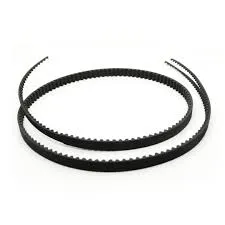- Arabic
- French
- Russian
- Spanish
- Portuguese
- Turkish
- Armenian
- English
- Albanian
- Amharic
- Azerbaijani
- Basque
- Belarusian
- Bengali
- Bosnian
- Bulgarian
- Catalan
- Cebuano
- Corsican
- Croatian
- Czech
- Danish
- Dutch
- Afrikaans
- Esperanto
- Estonian
- Finnish
- Frisian
- Galician
- Georgian
- German
- Greek
- Gujarati
- Haitian Creole
- hausa
- hawaiian
- Hebrew
- Hindi
- Miao
- Hungarian
- Icelandic
- igbo
- Indonesian
- irish
- Italian
- Japanese
- Javanese
- Kannada
- kazakh
- Khmer
- Rwandese
- Korean
- Kurdish
- Kyrgyz
- Lao
- Latin
- Latvian
- Lithuanian
- Luxembourgish
- Macedonian
- Malgashi
- Malay
- Malayalam
- Maltese
- Maori
- Marathi
- Mongolian
- Myanmar
- Nepali
- Norwegian
- Norwegian
- Occitan
- Pashto
- Persian
- Polish
- Punjabi
- Romanian
- Samoan
- Scottish Gaelic
- Serbian
- Sesotho
- Shona
- Sindhi
- Sinhala
- Slovak
- Slovenian
- Somali
- Sundanese
- Swahili
- Swedish
- Tagalog
- Tajik
- Tamil
- Tatar
- Telugu
- Thai
- Turkmen
- Ukrainian
- Urdu
- Uighur
- Uzbek
- Vietnamese
- Welsh
- Bantu
- Yiddish
- Yoruba
- Zulu
Nov . 08, 2024 22:36 Back to list
Cost Analysis of Engine Drive Belt Replacement and Maintenance
Understanding Engine Drive Belt Costs
Engine drive belts are integral components in many automotive systems, playing a vital role in the operation of your vehicle. These belts help transfer power from the engine's crankshaft to various accessories like the alternator, air conditioning compressor, water pump, and power steering pump. Regular maintenance and timely replacement of these belts are crucial for optimal vehicle performance. In this article, we will explore the factors that affect engine drive belt costs and provide insights into maintaining these essential components.
Types of Engine Drive Belts
There are primarily two types of engine drive belts serpentine belts and V-belts.
1. Serpentine Belts These single belts are designed to operate multiple engine accessories at once, running along a winding path. Serpentine belts are commonly used in modern vehicles due to their efficiency and space-saving benefits. They typically last longer than V-belts but may be more expensive to replace.
2. V-Belts These older style belts are used in a more traditional setup, where each accessory has its own belt. While they are simpler to replace, they often need to be changed more frequently, leading to potentially higher cumulative costs over time.
Factors Affecting Drive Belt Costs
The cost associated with engine drive belts can vary significantly
. Here are a few key factors that influence pricing1. Material Quality The quality of the material used in belts affects their durability and performance. Premium belts made of high-quality rubber compounds with better resistance to heat and wear tend to be more expensive. Conversely, lower-quality belts may be cheaper initially but could require replacement sooner.
2. Brand Reputation Trusted brands with a history of producing reliable belts can command higher prices. While it might be tempting to opt for cheaper, lesser-known brands, investing in a reputable brand can save money in the long run by reducing the frequency of replacements.
3. Compatibility Some vehicles require specific belt sizes or designs that can influence costs. Aftermarket options can be more affordable, but it’s essential to ensure they meet the necessary specifications to avoid compatibility issues.
engine drive belt cost

4. Installation Costs Depending on the vehicle model, replacing an engine drive belt can be a straightforward DIY task or a more complicated job requiring professional assistance. Labor costs at automotive repair shops can range significantly, affecting the overall expense of replacing a drive belt.
5. Market Demand and Seasonal Factors Like many automotive parts, the cost of engine drive belts can fluctuate based on supply and demand. Seasonal factors, such as an increase in vehicle maintenance during the spring and summer months, can lead to higher prices.
Maintenance Tips
Regular maintenance of drive belts is crucial to avoid unexpected failures and costly replacements. Here are some tips to prolong the life of engine drive belts
1. Visual Inspections Regularly inspect the belt for signs of wear, such as cracks, fraying, or glazing. A quick visual check can prevent major issues down the line.
2. Listen for Noises Unusual squeaking or chirping sounds when the engine runs can indicate a problem with the belt. Prompt attention to such sounds can help identify issues before they escalate.
3. Follow Manufacturer Recommendations Always adhere to the vehicle manufacturer’s recommendations for belt replacement intervals. This can vary based on make and model, but typical recommendations can range from 60,000 to 100,000 miles.
4. Check Tension Ensure that the drive belt is properly tensioned. A loose or overly tight belt can cause excessive wear or lead to failure.
Conclusion
In summary, the cost of engine drive belts can be influenced by various factors, including material quality, brand reputation, vehicle compatibility, installation costs, and market demand. Understanding these aspects can help vehicle owners make informed decisions about maintenance and replacements. Implementing regular inspection and adhering to manufacturer recommendations can extend the life of drive belts, ultimately leading to cost savings and efficient engine performance. By recognizing the importance of these components and addressing them proactively, vehicle owners can ensure smoother operations and reduce the likelihood of unexpected repair costs.
-
Upgrade Power Steering Pump Belt for Smooth, Quiet Operation
NewsAug.27,2025
-
Precision Timing Belt & Chain: Engine Performance & Durability
NewsAug.26,2025
-
Precision Lathe Drive Belts: Durable & Reliable Performance
NewsAug.25,2025
-
84.5 Serpentine Belt: Durable & Precision Fit for Your Engine
NewsAug.24,2025
-
Premium Ribbed Drive Belts for Quiet Power Transmission
NewsAug.23,2025
-
High-Performance Vehicle Timing Belt for Engine Precision
NewsAug.22,2025

